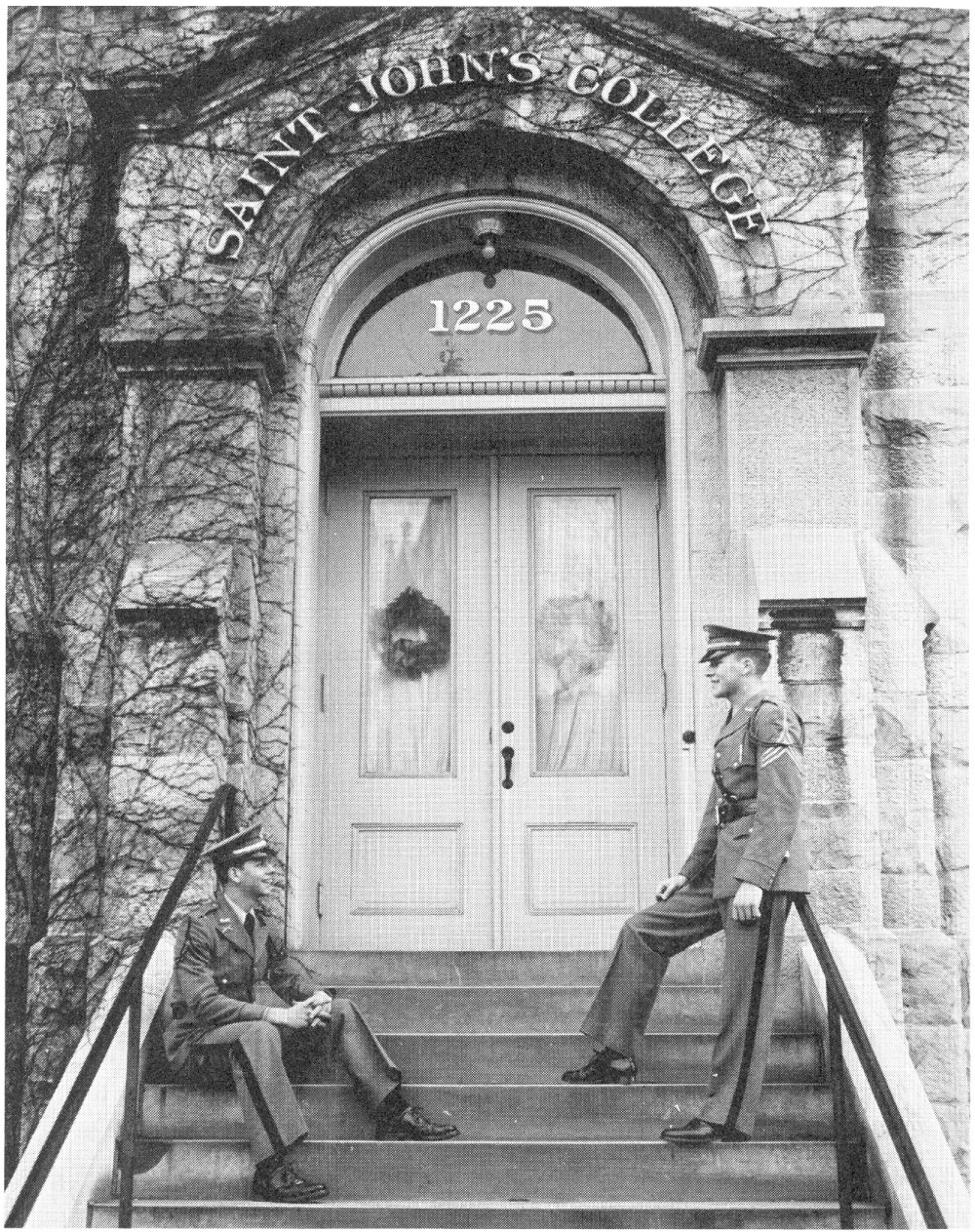History
The second oldest Christian Brothers school in the United States, St. John’s College was established in 1851 by Bro. John of Mary, FSC, and two other Christian Brothers in St. Matthew’s parish at 15th and H streets. These Brothers had been members of the faculty of Calvert Hall College in Baltimore since its founding in 1845. Because of space limitations, the Brothers moved the school to Carroll Hall at 10th and G streets in 1866 at the invitation of Fr. Walter. In 1868, the Brothers returned to St. Matthew’s parish at the request of Fr. Charles White, who had built a new school named St. Matthew’s Institute at the corner of 16th and L streets.

In 1878, the Brothers purchased the 1225 Vermont Avenue site of from the estate of General Montgomery C. Meigs. In August of the same year, construction of the building began. At first it was known as St. John’s Collegiate Institute and later, in 1887, it assumed its present title of St. John’s College and was incorporated under the District of Columbia statutes with the power to confer the bachelor of arts and master of arts degrees. At the June 24, 1892, commencement, six young men received the bachelor’s degree.
Largely through the efforts of Bro. Elzear Alfred, FSC, the Cadet Corps was organized under the direction of the United States Army and MAJ J. Dapray in 1915. From its inception, the Cadet Regiment was recognized as an outstanding military unit. For years, the regiment participated in presidential parades.
As the undergraduate departments of Catholic University and Georgetown University expanded, it was decided in 1921 by St. John’s Board of Trustees to discontinue the college department and devote the school facilities solely to secondary education.
St. John’s continued to prosper for the next 30 years until it became apparent that the Vermont Avenue facilities were no longer adequate. With further expansion in mind, the Brothers decided to build a new school on the Military Road campus. The “new” St. John’s opened to more than 1,000 students in September 1959. Years later in 1991, St. John’s became coeducational and the JROTC program became optional.
Throughout the 1990s and first decade of 2000, SJC continued to grow, both in enrollment and facilities. President Thomas Gerrow, FSC, completed two capital campaigns totaling $25 million, increased the endowment by $25 million, and increased enrollment to 1,050 students during his 1994–2010 tenure. History was made again in 2001 when Mr. Jeffrey Mancabelli became St. John’s first lay principal and in 2010 its first lay president.
The school continued to thrive under President Mancabelli’s leadership. Over the last two decades, St. John’s has experienced a dramatic expansion both in the physical plant and programming. Under the current strategic plan dating back to 2012, St. John’s is flourishing. In addition to $20 million in physical plant renovations, the school added $40 million in new construction, including Fernandez Stadium, the Mona Baseball Clubhouse, the Donatelli Center for Visual and Performing Arts, the Center for Performance and Leadership, and the Mona Family Center.
In 2013, SJC was the first private school in the region to institute a 1:1 iPad program—at no additional cost to families, and in 2015, St. John’s established the Entrepreneurial Center for Innovation and Social Impact. To modernize and enhance the relevance of the Cadet Corps for its students, the program separated from the federal JROTC program in 2019 and returned to the private Cadet Corps model used by St. John’s until the late 1970s. The current Cadet Corps Leadership Program is based of the four pillars of leadership, cadet culture, character, and health and wellness.
Over the last decade, St. John’s has expanded their athletic and performing arts programs. Part of that expansion was the development of a comprehensive nutrition, strength, and conditioning program, in which student-athletes are provided the highest quality of professional training and medical support.
St. John’s plays a prominent role on the Washington, DC, scene and has produced thousands of civil, religious, and business leaders in the Washington area.